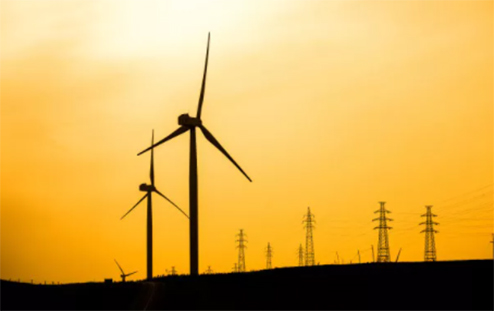A wind turbine, also known as a windmill or wind generator, is a device that converts wind energy into electrical or mechanical energy. Its working principle is mainly based on the power of the wind to drive the turbine blades to rotate, thereby converting mechanical energy into electrical energy. The following is a detailed analysis of the working principle of wind turbines.
Working principle of wind turbine
The kinetic energy of wind is converted into mechanical energy: Wind is a form of airflow, which contains huge kinetic energy. When the wind blows against the blades of a wind turbine, the shape and inclination angle of the blades cause the kinetic energy of the wind to be converted into the rotational kinetic energy of the blades. In this process, the pressure difference on both sides of the blade generates lift and drag, and the lift is greater than the drag, causing the blade to rotate.
The rotation of the blade drives the axis: The rotation of the blade transmits the rotational power to the generator through the axis. In this process, a speed increaser (also called a gearbox) is sometimes required to accelerate the rotation speed to meet the working requirements of the wind turbine. The function of the speed increaser is to convert the low-speed rotating wind wheel blades into high-speed rotation, thereby improving the power generation efficiency.

The generator converts mechanical energy into electrical energy: The generator converts the mechanical energy transmitted by the axis into electrical energy through the principle of electromagnetic induction. When the rotor inside the generator (usually driven by a shaft) spins, it generates electric currents in a magnetic field. These currents are transmitted through wires and form electricity that people can use.
How wind energy is captured?
When the wind blows, it sweeps over the blades of the wind turbine. Because of the aerodynamic design of the blades, the wind passes faster on one side than on the other, creating a pressure difference. This difference creates lift (similar to the lift that makes an airplane fly) and causes the blades to rotate around the rotor.
The amount of energy captured depends on several factors, including:
- Wind speed: The power generated by a wind turbine increases with the cube of the wind speed. This means that a small increase in wind speed can result in a significant increase in energy capture.
- Blade length: Longer blades can sweep over a larger area, capturing more wind and thus generating more electricity.
- Air density: Higher air density, which is affected by altitude and temperature, also helps capture more energy.
Converting kinetic energy to mechanical energy
As the blades spin, they turn the rotor, which is connected to a low-speed shaft inside the nacelle. This shaft transfers the rotational energy to a gearbox. The gearbox then increases the speed, transferring it to a high-speed shaft connected to a generator.
Converting mechanical energy to electrical energy
The high-speed shaft drives a generator, which converts the mechanical energy to electrical energy. A magnetic field is created inside the generator, and as the shaft spins, it induces an electric current in the coils. This current is the electrical energy that is sent to the grid.
Transmission of electricity
The electricity generated by the wind turbine is transmitted down the tower via cables to a transformer. The transformer increases the voltage, making it suitable for transmission over long distances via power lines.
Control systems and efficiency optimization
Modern wind turbines are equipped with control systems that monitor wind conditions and turbine performance to optimize energy production. These systems include:
Pitch control: The angle of the blades can be adjusted (or "pitch") to control the speed of the rotor. In high winds, the blades pitch to reduce lift and prevent damage to the turbine.
Yaw control: The yaw mechanism adjusts the orientation of the nacelle to ensure the blades are always facing the wind, maximizing efficiency.
Braking system: In extremely strong winds or during maintenance, the braking system can stop the rotor to protect the turbine from damage.
